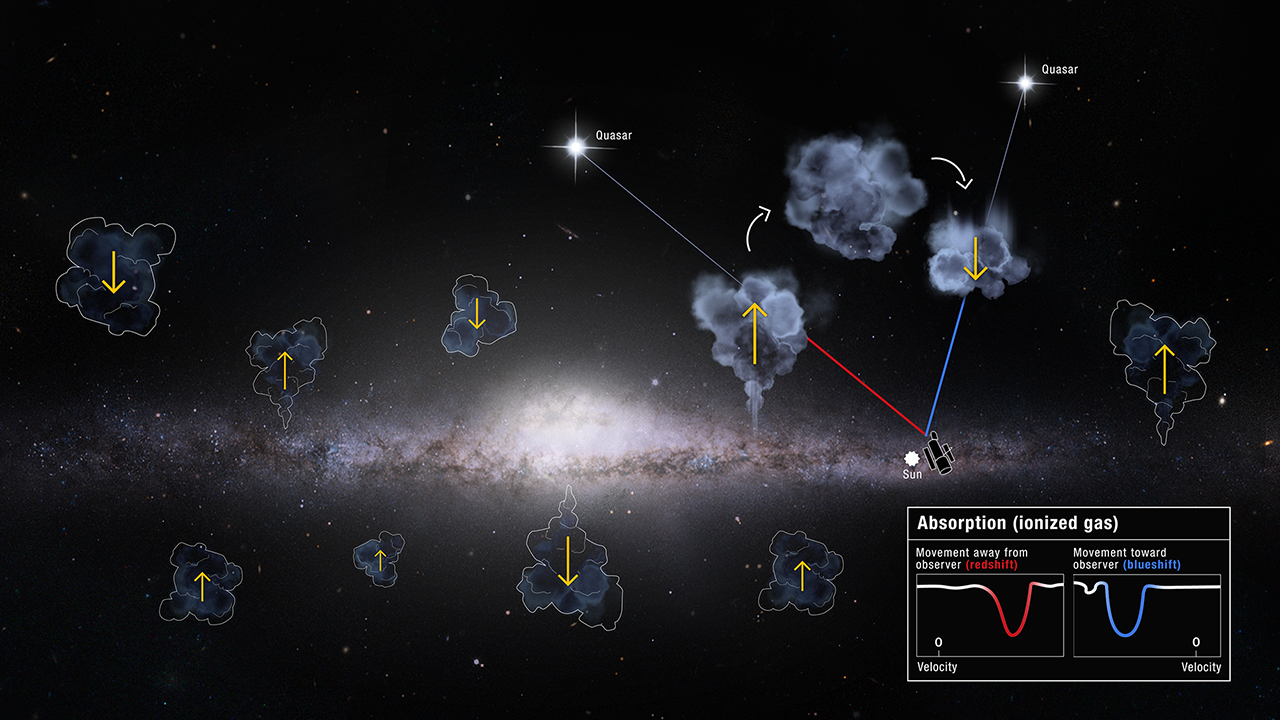A Cosmic Mystery: Why is the Milky Way Galaxy Getting Gassier?
There seems to be an imbalance in our galaxy.

Astronomers have discovered a strange surplus of gas in the Milky Way galaxy.
Using 10 years of data from NASA's Hubble Space Telescope, the team of astronomers concluded that there is more gas coming into our galaxy than leaving it. Rather than an equilibrium of gas entering and escaping, there is a significant imbalance, though the team behind this finding has not yet found the source for this gaseous disparity.
The researchers used data from Hubble's Cosmic Origins Spectrograph (COS), which allows the space telescope to study objects that absorb or emit light and determine aspects such as their temperature, chemical makeup, velocity and density. With COS, the team could observe and track the movement of gases in the galaxy: the gases appear redder as they move away from our galaxy, and bluer as they get closer through the phenomena known as redshift and blueshift.
Related: Giant Gas Cloud Surrounds Our Milky Way Galaxy
This allowed the researchers to see that there was more "blue" (entering) gas than "red" (exiting) gas. Although the researchers have not pinpointed the source of this imbalance, they think that it could possibly be caused by one of three things.
First, the astronomers think that this excess gas could be coming from the interstellar medium. Second, they suggest that the Milky Way is using its impressive gravitational pull to swipe gas from smaller, nearby galaxies, according to a statement.
Additionally, seeing as this study considered only cool gases, researchers think that hotter gases might also contribute to this finding.
Breaking space news, the latest updates on rocket launches, skywatching events and more!
Gases leave our galaxy when events like supernovae and stellar winds push them out of the Milky Way's galactic disk. When gases fall back into our galaxy, they contribute to the formation of new stars and planets. So the balance between the inflow and outflow of gases is important to regulating how objects such as stars form in galaxies like ours.
"Studying our own galaxy in detail provides the basis for understanding galaxies across the universe, and we have realized that our galaxy is more complicated than we imagined," co-author Philipp Richter of the University of Potsdam in Germany said in the statement.
This research will be published in a study in The Astrophysical Journal.
- Most Amazing Hubble Space Telescope Discoveries
- Infographic: Our Milky Way Galaxy: A Traveler's Guide
- Photo Gallery: The Milky Way's Core
Follow Chelsea Gohd on Twitter @chelsea_gohd. Follow us on Twitter @Spacedotcom and on Facebook.


Chelsea “Foxanne” Gohd joined Space.com in 2018 and is now a Senior Writer, writing about everything from climate change to planetary science and human spaceflight in both articles and on-camera in videos. With a degree in Public Health and biological sciences, Chelsea has written and worked for institutions including the American Museum of Natural History, Scientific American, Discover Magazine Blog, Astronomy Magazine and Live Science. When not writing, editing or filming something space-y, Chelsea "Foxanne" Gohd is writing music and performing as Foxanne, even launching a song to space in 2021 with Inspiration4. You can follow her on Twitter @chelsea_gohd and @foxannemusic.
